Italian style in the interior
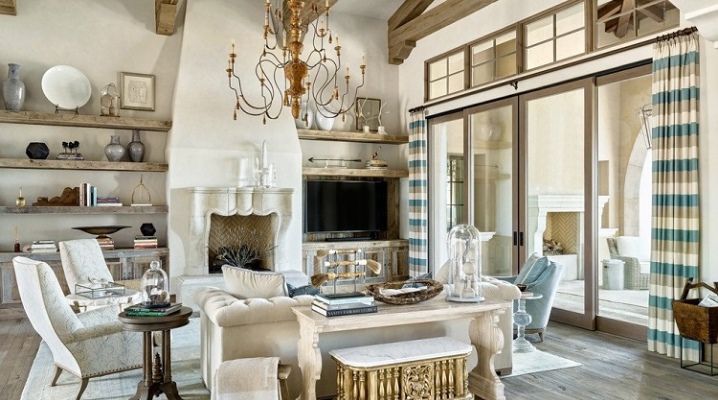
For several centuries Italy has been considered the permanent capital of fashion and style; it is customary all over the world to imitate its culture. And although the Italian style of interior decoration in our country is not yet very popular, in fact, this is only a plus for him - the apartment will not look “like everyone else's”, and it will be easier to show off to guests.

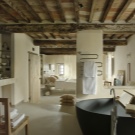
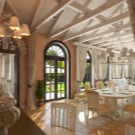

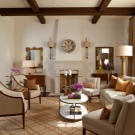
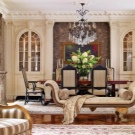
Origin of the style
Although formally the style is called Italian, its deep roots go back to the ancient times of the Roman Empire, and therefore it does not have a strict connection to Italy - in fact, it was also formed on the territory of states adjacent to modern Italy. The style is characterized by a combination of elements of successive eras - there is little from both antiquity and the Renaissance, but in any case, the style remains classic and is not tied to anything modern. If the above-mentioned antique style and the Renaissance were more inherent in cities, which have always been the main focus of culture, then the Italian style as a whole is a kind of version of the Apennine country.
Although the coastal regions were mastered and developed in ancient times, in the hinterland, somewhere in the mountains, civilization flourished much later. Local owners, even if they were wealthy townspeople who were building a country residence, here no longer had access to their favorite stone, which was not at hand and could not be easily delivered, and therefore they intensively used the wood of local forests both for construction and for the production of furniture. ... At the same time, if possible, they did not shy away from urban excesses in the form of columns, arches, sculptures and modeling.
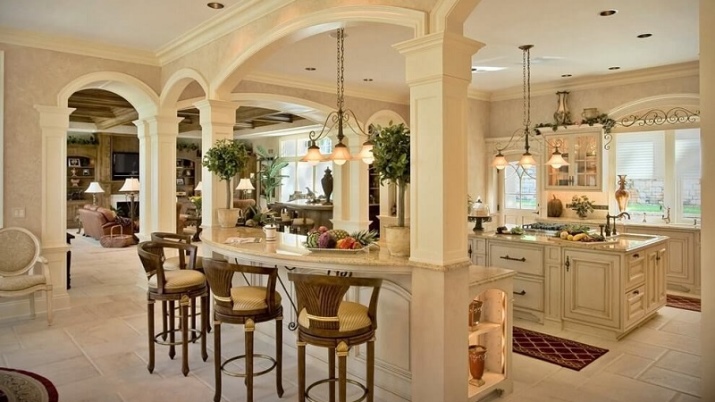
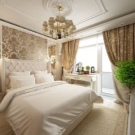
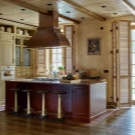

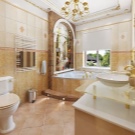

The rustic origins of the style mean that it is generally very patriarchal, geared towards family values and keeping its own family history. Antiques and various souvenirs in good old Italy were often made by hand, this is not purchased, but your own, because where, if not in this country, to honor history.
That is why each building in the Italian style has a unique charm and indescribable home comfort. At the same time, connoisseurs also highlight specific trends within the Italian style - the rustic style itself, Mediterranean, Tuscan, classic and modern.
In our reality, they are usually mixed a little, therefore we will consider them as variants of one holistic style.
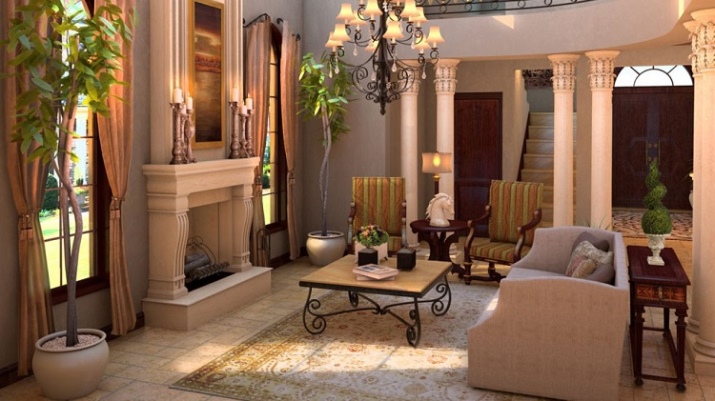
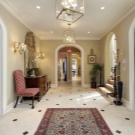
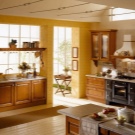

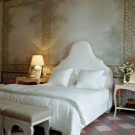
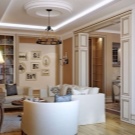
How to decorate the interior?
For those who, in general, are well versed in the main design styles, but encounter the Italian direction for the first time, the Apennine style will inevitably remind French Rococo, and for good reason - there is really quite a lot in common. Nevertheless, the "equal" sign cannot be put between them, because the Italian style has a number of specific features:
- in Italy, everything is not so subtle - here the subtlest exquisite decor coexists with massiveness unacceptable for Rococo;
- Italian style is often described as a kind of cross between medieval French style and Mediterranean country - at first glance, everything is practical, but not without a touch of sophistication;
- the materials are used purely natural, but in addition to wood and stone typical for any other European regions, local solutions such as Venetian plaster and Venetian glass are also widely used;
- the color palette is natural, mainly those shades that can be seen around are used: blue and green, beige, creamy and purple;
- nature should be close, because Italian-style houses "let" greenery into their territory in the form of abundant plantings in pots, even if we are talking about a small tree;
- the penetration of nature, mentioned in the paragraph above, is formed as natural, therefore the edge of the terrace is often made uneven on purpose, so that it seems miraculous;
- in the style you can feel the typical aesthetics of the south - the windows are large here, because they do not blow from cold, the entrance doors can be made of glass, instead of severe thick curtains - light tulle.
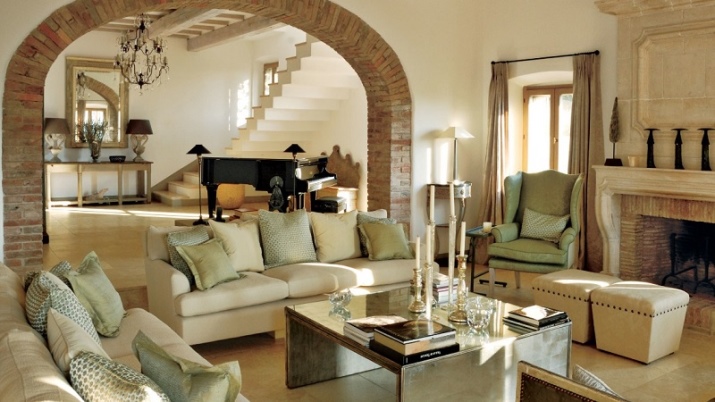
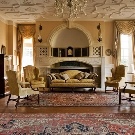
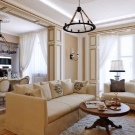
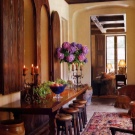
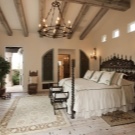
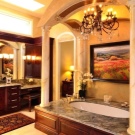
As the reader probably noticed, the description of the style is more about a private house than an apartment., and this is not surprising - the principles of any classical style have always been determined by the wealthy people who lived in mansions.
Nevertheless, an apartment can also be decorated in an Italian style, if you choose the right finishing materials and furnishings. Let's talk about this in more detail.
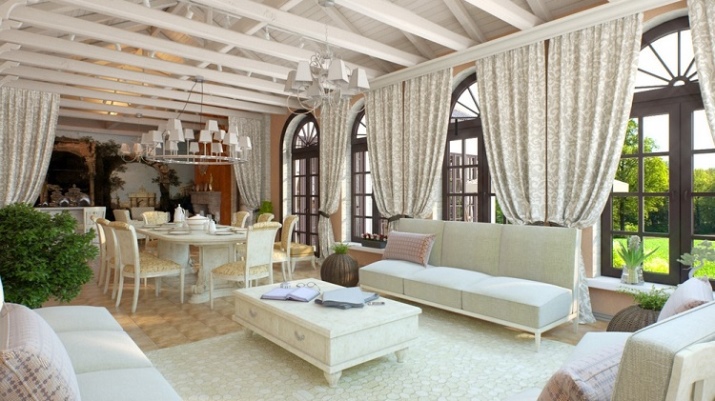
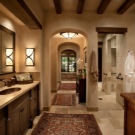

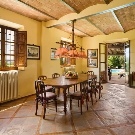
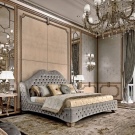

Walls
Today, Venetian plaster is widespread in our country as well, but it comes from Italy, which means it will easily fit into the interior design. However, this is the easiest way, not leading to the originality of the premises, and if so, you can pay attention to the alternative in the form of light cork wallpaper. Globally, even tiles are allowed, and not only in the kitchen or bathroom, but also in any other room.
If you decide on such a move, choose a large tile with strongly blurred patterns, but remember that the cold that will inevitably blow from ceramics is appropriate in the warm climate of the Apennines, and in our conditions it can be deadly for comfort.
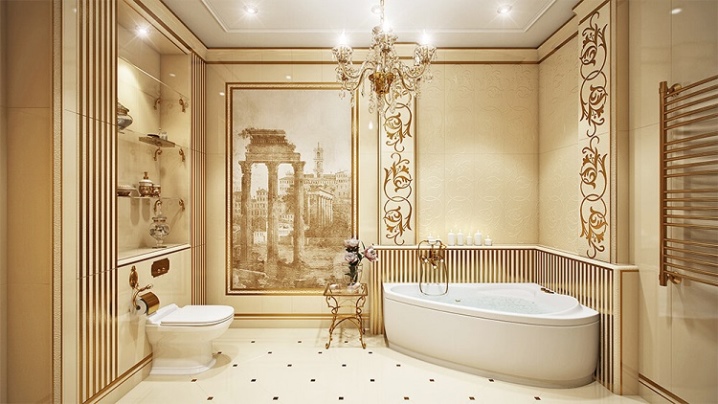
Mosaic and painting are actively used to decorate the walls. Mosaic, in general, is very typical for Italian interiors, it has been popular since ancient times. It is collected from small fragments, which may even be broken tiles, because too simple square fragments are not welcome. Likewise, the pieces of the mosaic are not necessarily the same size. Painting is usually done with acrylic-based paints, it necessarily has rounded shapes and curls, and ivy and grapes as a contour will be appropriate for almost any plot.
Among other things, embossed wall protrusions or niches can be additionally contoured with either natural stone or its artificial counterparts.
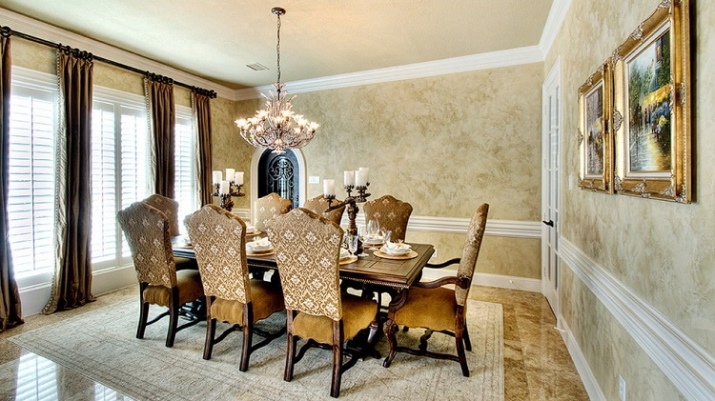
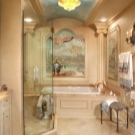
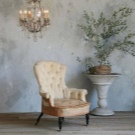

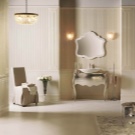
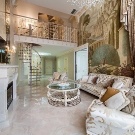
Floor and ceiling
Italians love mosaics everywhere, not just on the walls, so it can also be used to decorate the floor. The tiles should be rough to prevent slipping when walking. Even in the bedroom and living room, it will be matte due to its texture, but this is not scary - this style does not need extra shine.
Parquet or successfully imitating it laminate are also suitable, and there is a clear rule: if there is a lot of wood in the interior, then the parquet board should be in harmony with the rest of the wooden details both in tone and texture. If, in addition to parquet, there is not a lot of wood in the interior, then the floor is made light and emphatically rough in texture. The rest of the flooring options, including wood-like linoleum, will not fit into the Italian style.
With ceilings it is much easier, because they are far from being so "picky" - only PVC panels and multi-level plasterboard ceilings will be inappropriate. Everything else is fine, and the stretch ceiling in white, beige or cream looks especially juicy. Both suspended ceilings and a type-setting tile structure will also be appropriate, and lovers of a rustic flavor should decorate the ceiling with wooden beams, while not forgetting to choose the floor covering to match.
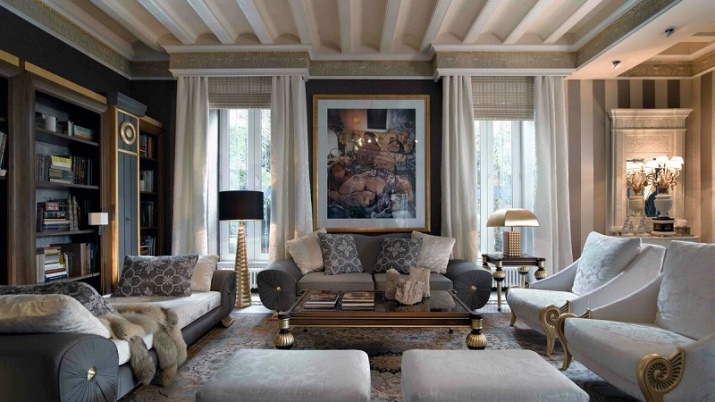
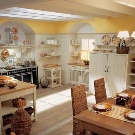
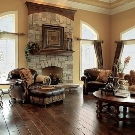
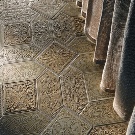
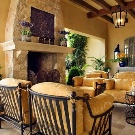
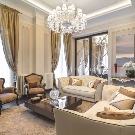
Furniture
For Italians, geared towards aesthetics, the harsh chopped Nordic forms of furniture are something completely unacceptable. Southerners, on the other hand, love sophistication and smoothness in everything, because most furnishings contain light waves, bends and even patterns in their contours. If this is a table or a wardrobe, then it should have small curved legs - this is beautiful.
The inhabitants of Italy, by their nature, are not accustomed to some kind of severe trials, so they look for comfort and convenience in everything. The predominant part of the furnishings here fits the concept of upholstered furniture - these are numerous sofas, armchairs and poufs. Even the chairs at the dining table here should be soft and always have a high back - this is a matter of comfort.
Upholstered furniture upholstered in fabric, as well as bedroom sets, largely determine the color scheme of the room. We have already talked about what colors are welcome in Italian style, and textiles are selected according to the logic in order to be a bright accent against the background of the general gamut.
Italians do not accept boring dullness, it presses on them, and this rule is relevant not only in the nursery, but even in the usually strict (in our understanding) corridor.
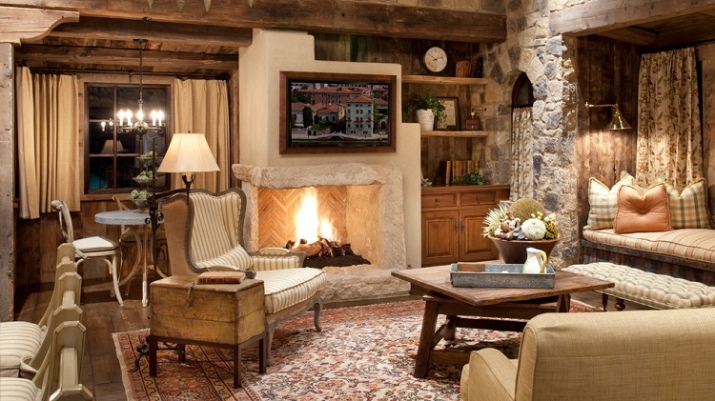
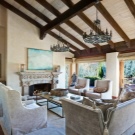
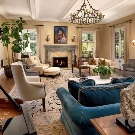
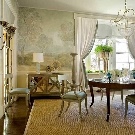
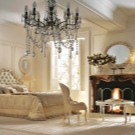

Lighting
On the one hand, residents of southern countries are accustomed to bright natural light, on the other, that is why they are not drawn to illuminate their homes too brightly, especially since there are no nights that are too long here. That is why the main chandelier, no matter how lush and huge it may seem, never gives too much light in an Italian-style room, but shines softly and diffused.
Of course, for certain needs, good lighting is still necessary, however, this issue is solved by lamps that give light to a point. Most often these are small wall sconces that leave the center of the room in a light twilight. According to the logic described above, the modern branch of the Italian style gravitates very much towards various stretch and suspended ceilings - they allow you to build in spotlights and not take up space against the wall.
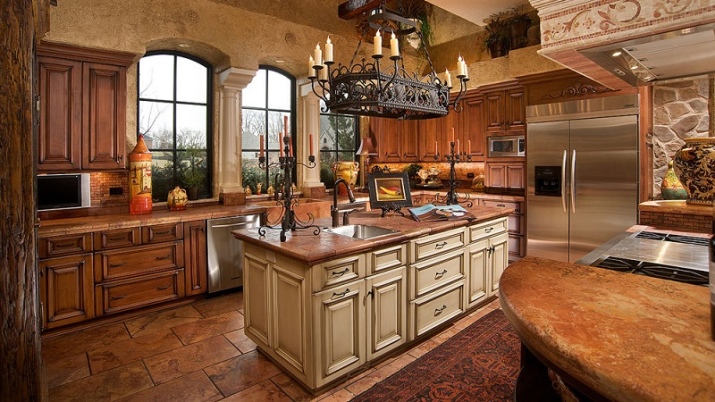
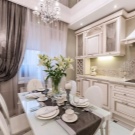
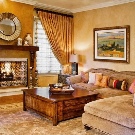
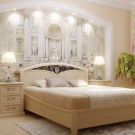

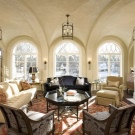
Accessories and decor
It is not for nothing that Italy is considered a country with a very developed art, and after all, all the great creations of recognized masters of painting and sculpture at first stood in the houses of wealthy Venetians, Genoese, and Florentines. Even if the simpler citizens could not afford a real masterpiece, one should not forget that the masters had ten times more students who also left a lot of legacy - in a word, pictures and figurines are indispensable.
In addition, the Italian city-states actively traded with the entire Mediterranean, and therefore their inhabitants could boast of beautiful imported porcelain.
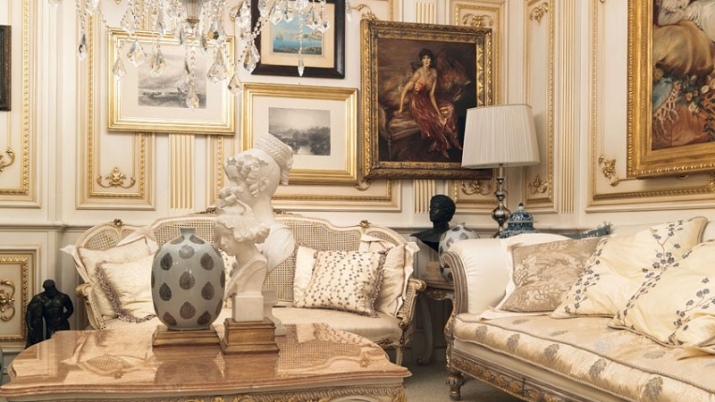
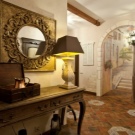
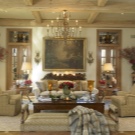

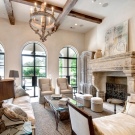
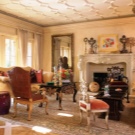
The plots for the selected works of art are best taken from the history or nature of Italy. You can start right from the earliest centuries, touching the times of Romulus and Remus, Ancient Rome and Hellas, closely associated with it, but you can also depict the merchant ships of the Italian merchants of the Renaissance. Alternatively, favored by the Italians themselves, there can be bunches of grapes (in a painting, in a mosaic, in the form of a sculpture) or olive groves.
More globally, almost any decoration characteristic of sunny Italy can play the role of decoration. At one time in Venice they made the most luxurious multi-tiered chandeliers in the world - in the apartment it is unlikely that it will be possible to repeat the scale of the palace, but you can at least try. A mirror with a gilded baguette is another solution that will look sensible. Luxurious blackout curtains made of expensive fabric for the bedroom, where twilight still does not hurt, or an old bookcase with inlaid precious metals will also come in handy.
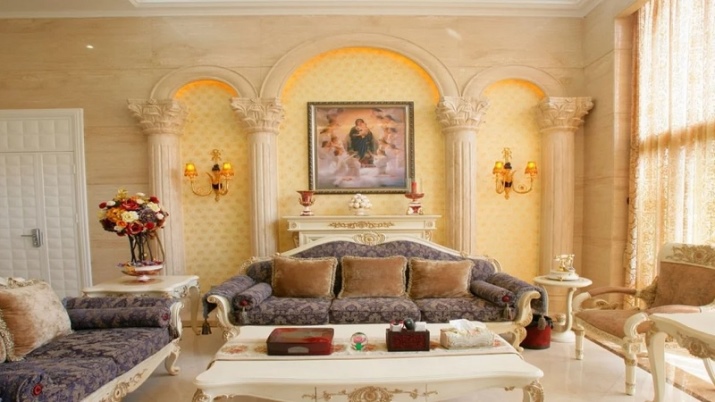
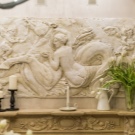
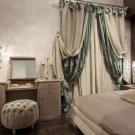
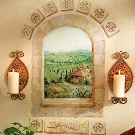
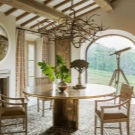
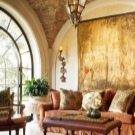
House projects
As already mentioned, in the case of apartments, it is more about following certain rules of the Italian style, while its full implementation is possible only in a private cottage. However, in some cases "correct" repair of a country mansion is impossible and it can only be rebuilt.
The reason for this is the layout of the building. The number of storeys is not so fundamental - the house can be one-story or higher, but the style will not be perceived as Italian if the rooms are small, with low ceilings and narrow windows.
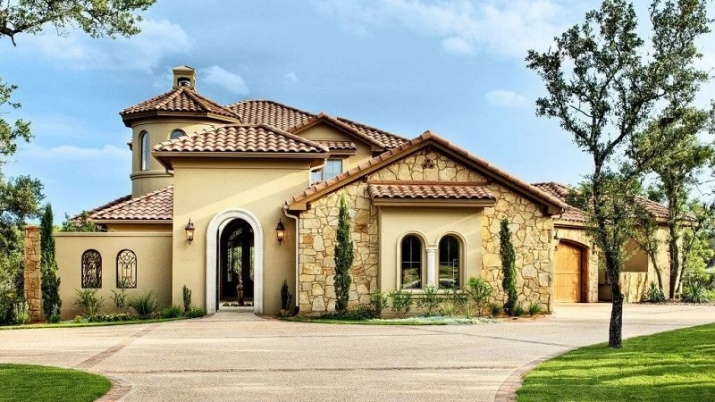
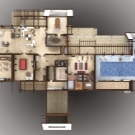

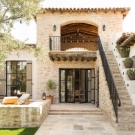


The facade can be transformed by adding to it the terrace with potted trees described in the previous chapters, you can replace the usual entrance doors with glass ones, but all the same, these will be only half measures, which still do not make the style fully Italian.
Meanwhile, such an obvious Mediterranean element as a patio is unlikely to be organized inside an already built building, and this is a key place for holding a siesta. When planning a building from scratch, this point must be taken into account: the patio is a patio with a flower bed and covered terraces for relaxation around the perimeter, which is protected from all sides by the house itself from both the wind and wild animals.
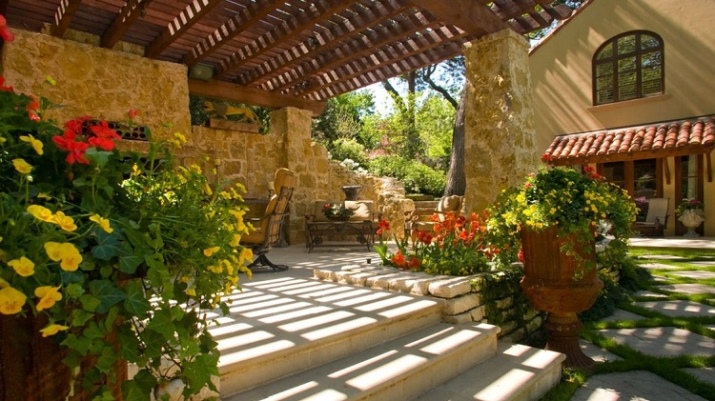
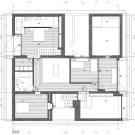
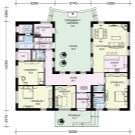
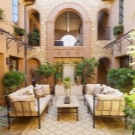
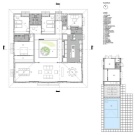

Stylish examples of room design
The first photo is an interesting example of an Italian-style living room. The color scheme is selected mainly in light shades, but the textile upholstery of upholstered furniture acts as an accent, and there are both bright and less noticeable blotches. Nothing hinders the free spread of light - instead of doors there are many arches, the fences are made with openwork. The pictures on the wall emphasize that the owners are not indifferent to beauty.
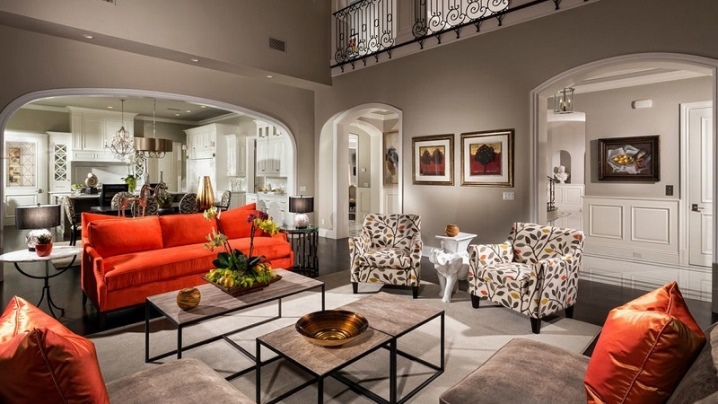
The second example shows a wonderful example of a dream living room. In the cold season, it is very cozy to warm up by the large fireplace, sitting on soft pillows and admiring a good view from the panoramic window, and in summer you can go out to the spacious terrace and spend your time there. Several locations are allocated for living greenery inside the premises.
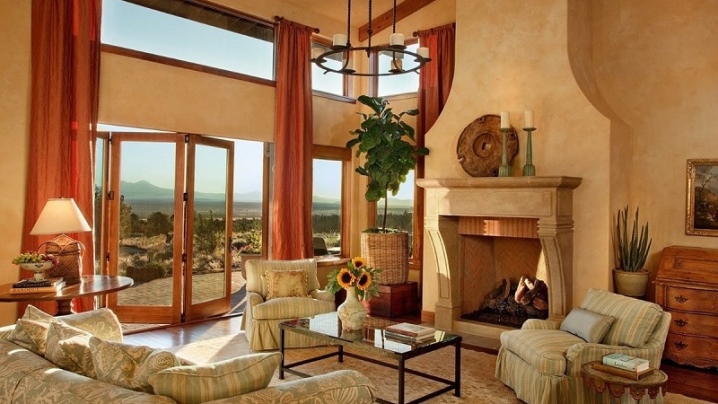
The third photo shows an Italian-style bedroom. Notice how the floor and ceiling echo in color, contrasting with the predominantly light-colored walls. There is a lot of wood in the interior, some of the furnishings could theoretically be made by hand by the owners themselves. The exit to the terrace is directly adjacent to the bed, allowing you not to go far for fresh air.

The following video will tell you how to create an Italian style in the interior.













The comment was sent successfully.